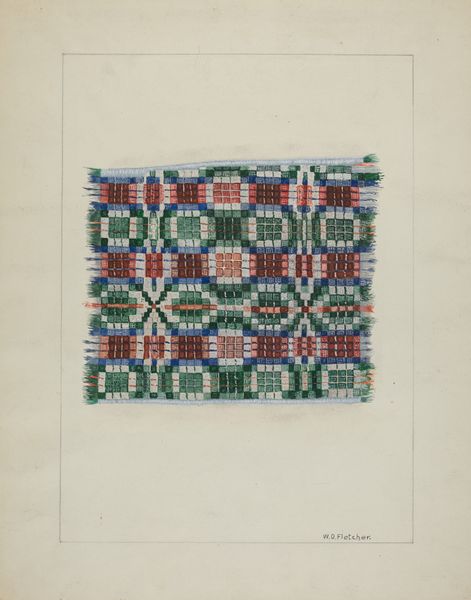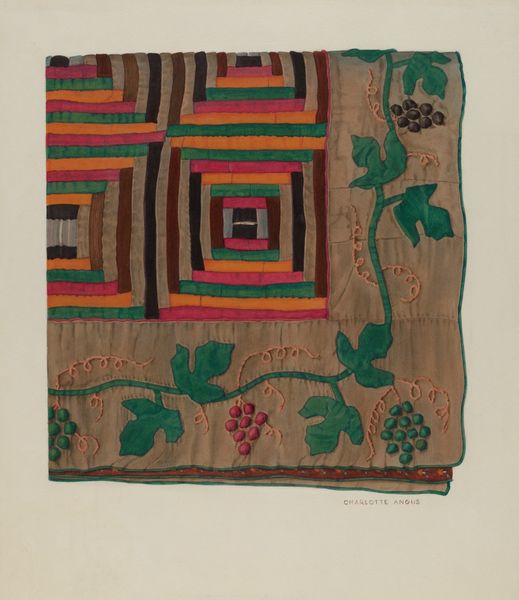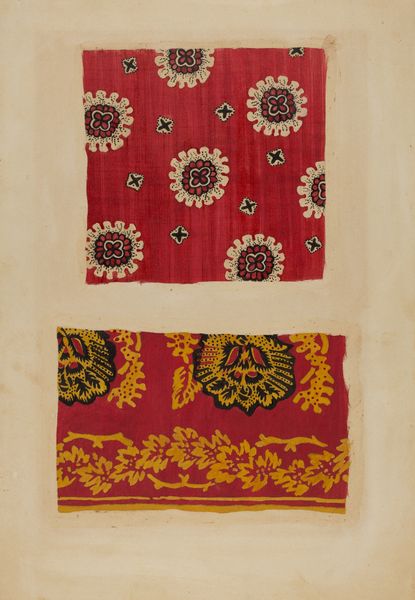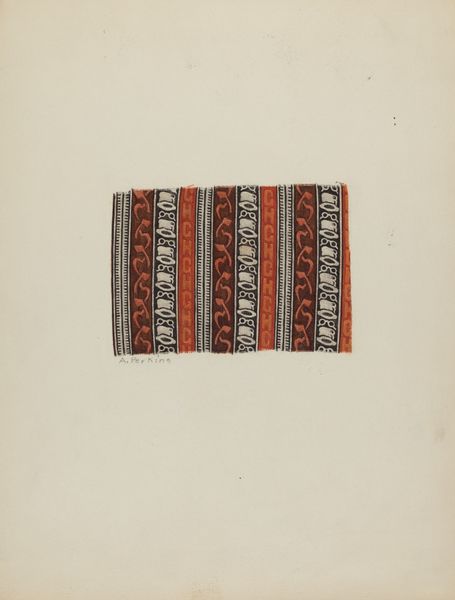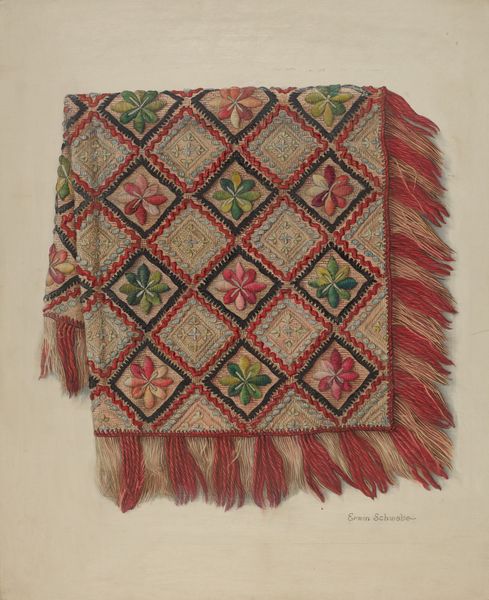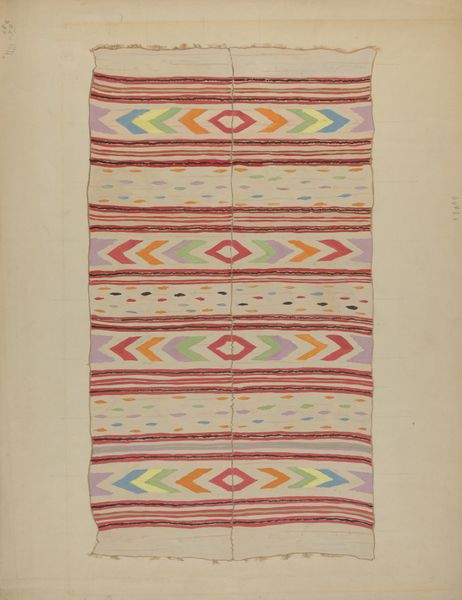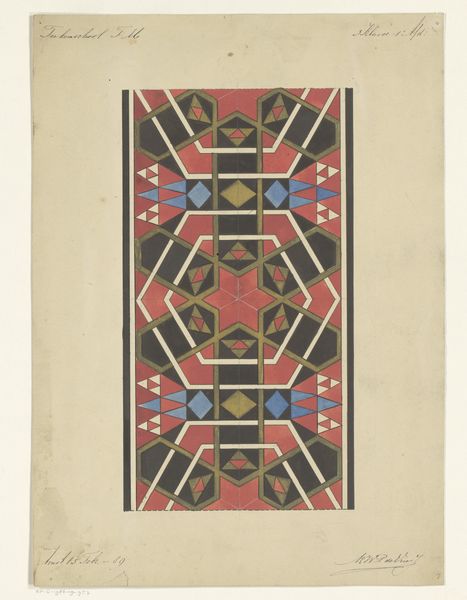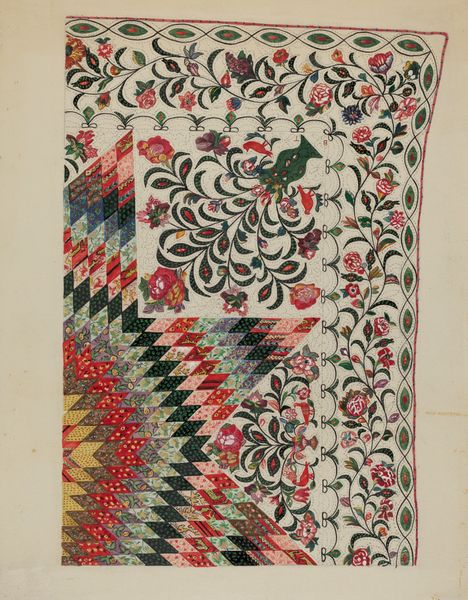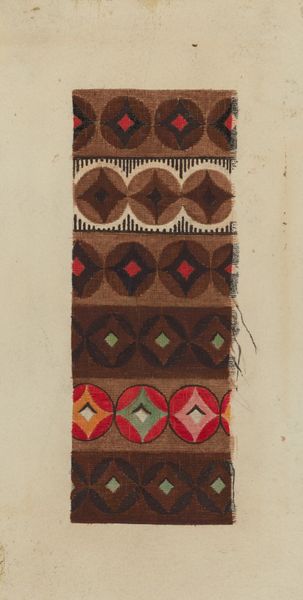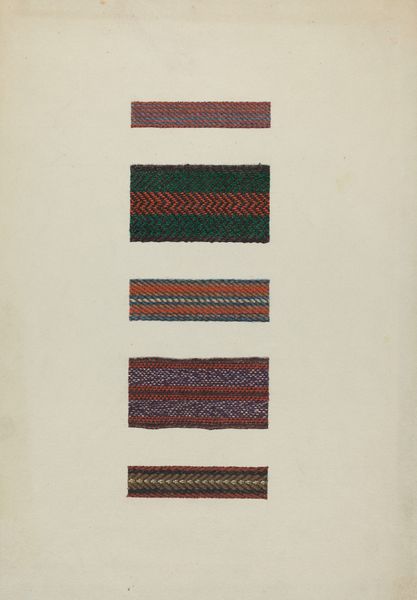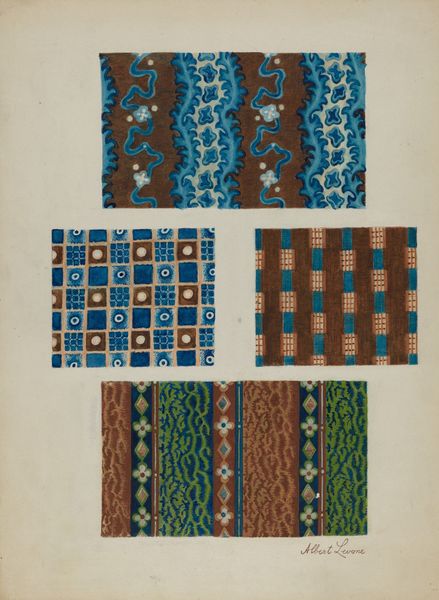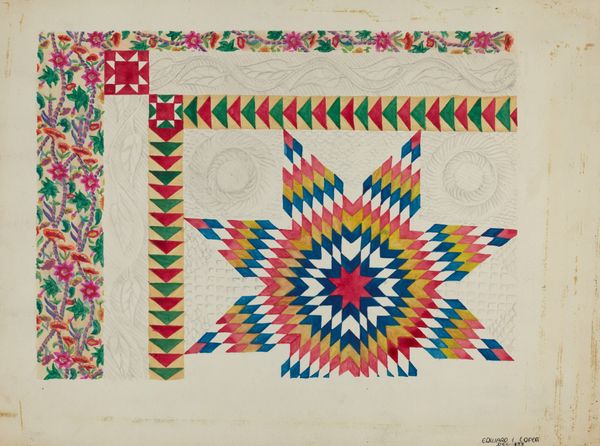
textile
#
decorative element
#
textile
#
decorative art
Dimensions: overall: 35.4 x 24.3 cm (13 15/16 x 9 9/16 in.)
Copyright: National Gallery of Art: CC0 1.0
Curator: Here we have a textile design from around 1938 by Lucille Lacoursiere simply entitled "Printed Textile." What are your initial impressions? Editor: My first thought is how evocative it is of cultural hybridity. The mix of colors, forms, and possible influences hints at a story far beyond its material presence. Curator: I agree; there's a push and pull between machine-made and handmade in its creation. Consider how it was made, likely on an industrial printing press yet emulating artisanal designs of woven cloth and embroidery, what’s your take? Editor: I would point out how these pieces trouble neat categories of art and craft. The accessibility of manufactured textiles had real impacts on who could adorn themselves or their homes. In some ways, it could both democratize design and exploit labor. Curator: Absolutely. Mass production also changed traditional methods and techniques, as it made textile arts much more attainable and cheap, though still the issue of social inequity existed for factory employees. And consider this: Textile production, especially back then, involved very gendered labor dynamics. Editor: Precisely. Examining its aesthetic decisions becomes so much more interesting when you think about gender, class, and cultural identity intertwining around this textile's production and intended use. For whom and under what circumstances was this intended? Curator: I think seeing how objects like this blur high and low art also demands a fresh look at artistic creation itself. This challenges how we traditionally define and value 'art'. Editor: Definitely. Its story resonates today as questions surrounding identity, cultural exchange, and power structures embedded in everyday materials continue to ignite contemporary conversations. Curator: Spot on. Its accessibility allows us to examine larger material-political relations. Editor: So true, understanding its nuances lets us better dissect today's complexities, where similar dynamics persist. Curator: That makes it incredibly relevant now, encouraging deeper analysis of everyday artistry, labor practices, and societal contexts. Editor: Couldn't agree more. By delving deeper, we gain a more grounded appreciation for both artistic practices and the complex webs of social relations.
Comments
No comments
Be the first to comment and join the conversation on the ultimate creative platform.
